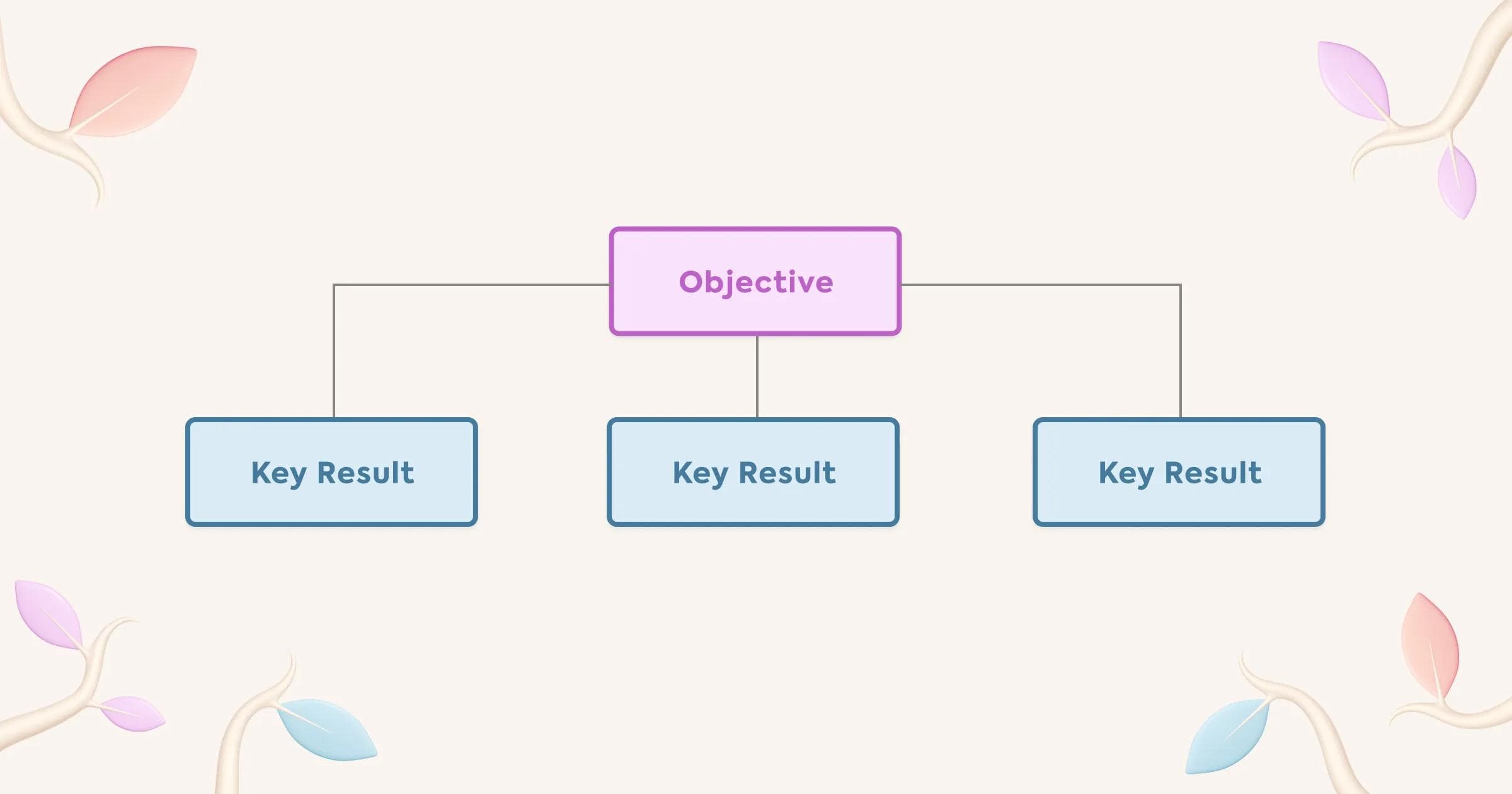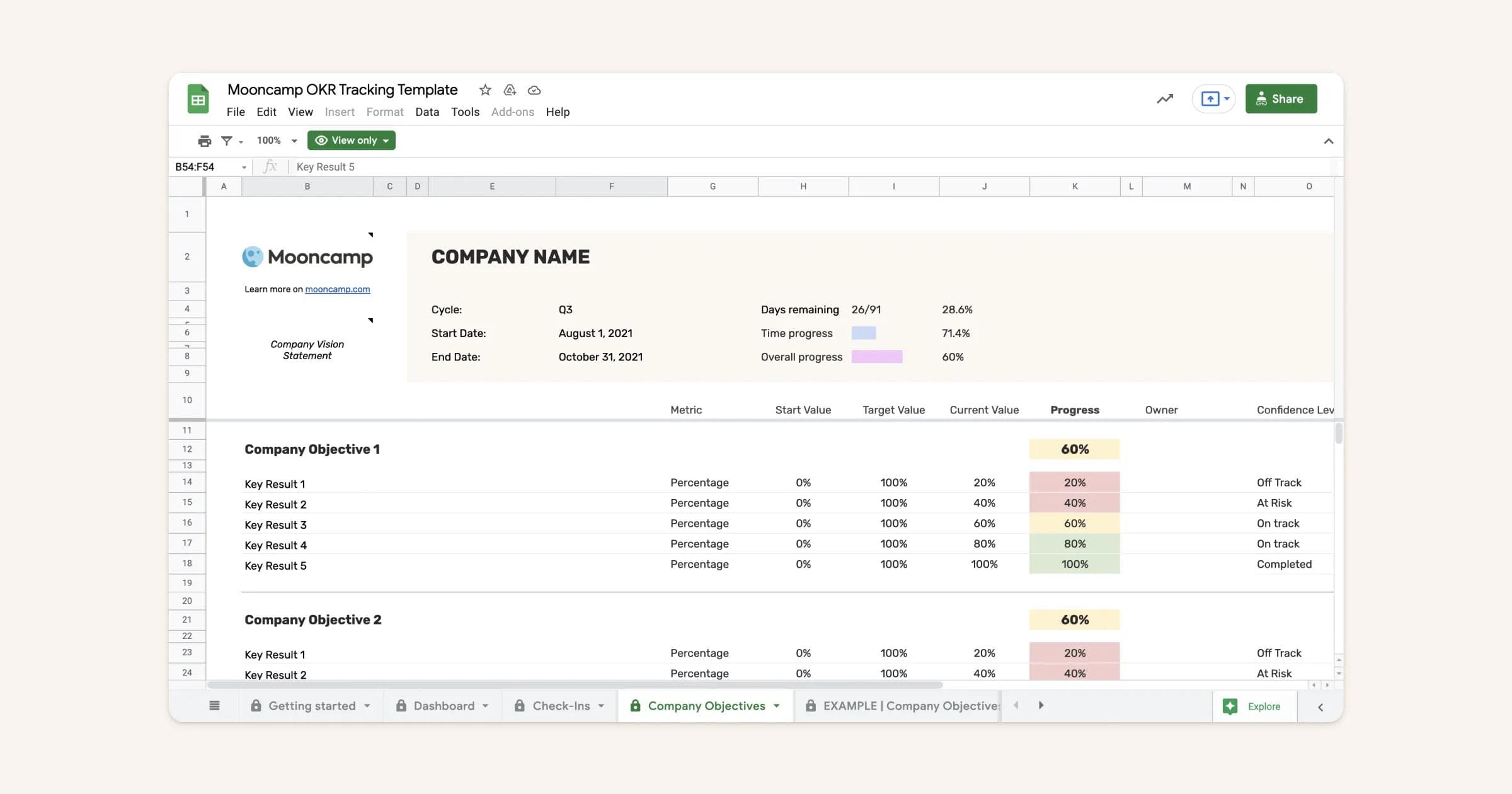OKR (short for “Objectives and Key Results”) is increasingly gaining acceptance as a management method. More and more companies are relying on this agile framework for setting organizational goals. A Google trend analysis for the search term “OKR” shows an 11-fold increase in search volume over the last 10 years. But what impact do OKRs actually have? Why are companies implementing strategic OKRs? And can OKRs actually make an entire company more agile?
We provide answers to these and other questions in this article – backed up by recent studies. Not only have we researched and compiled the most important facts, figures and data. We also got to the bottom of a few questions ourselves and asked 40 companies of all types and sizes why, how and with what results they use OKRs.
The result is the OKR Impact Report 2022 with numerous OKR statistics.
📝 This article provides a general overview. If you would like more detailed information and all the analysis including graphics, be sure to download the full OKR Impact Report 2022.
Expect statistics on these topics in this article:
- Organizational Agility
- Goals and motivations for OKR implementation
- Use of the OKR methodology
- Impact, challenges and success factors of OKRs
Our top 3 OKR statistics from the OKR Impact Report 2022
Let's jump right in with the top three findings from our OKR Impact Report 2022:
- The most successful companies have a 28% higher communication intensity, measured by the number of communication channels used, and use OKR check-ins more often than the comparison group.
- 83% of the surveyed companies agree that OKRs have a positive impact on their organization. Almost a third even fully agree.
- Over 80% of companies have OKR coaches (or OKR masters or a similar role) to oversee and manage the OKR process.
💡 By the way, a benchmark study (in German) by Haufe Talent and Stuttgart University of Applied Sciences came to similar conclusions: 62% of OKR users stated that they had an OKR master in the company who was responsible for the entire OKR process.
Agile statistics: Agility in numbers
Before we dive deeper into OKR statistics, a quick look at what impact agile methods like OKR, Scrum, Kanban and others have on organizations in general pays off.
- Agile methods help overcome unforeseen challenges. The COVID-19 pandemic has presented companies with unexpected challenges. Chris James, CEO of Scaled Agile, Inc. demonstrated the value of embracing agile project management in such times in his welcome speech at the Global SAFe Summit 2020: 93% of business units that had fully adopted an agile model prior to the pandemic outperformed business units that hadn't. (Source: Apptio)

- Agility is a top priority in many organizations. As early as 2017, a McKinsey Global Survey found that three-quarters of the organizations questioned said that agility was one of the top three priorities on their corporate agenda.
- Working in an agile manner can significantly improve performance. Another global survey by McKinsey, conducted in October 2020, shows that companies that have successfully adopted agile methods stand out over less agile organizations in terms of speed, higher customer satisfaction, increased performance, more innovation, better employee engagement, clarified priorities, and overall greater operational efficiency.
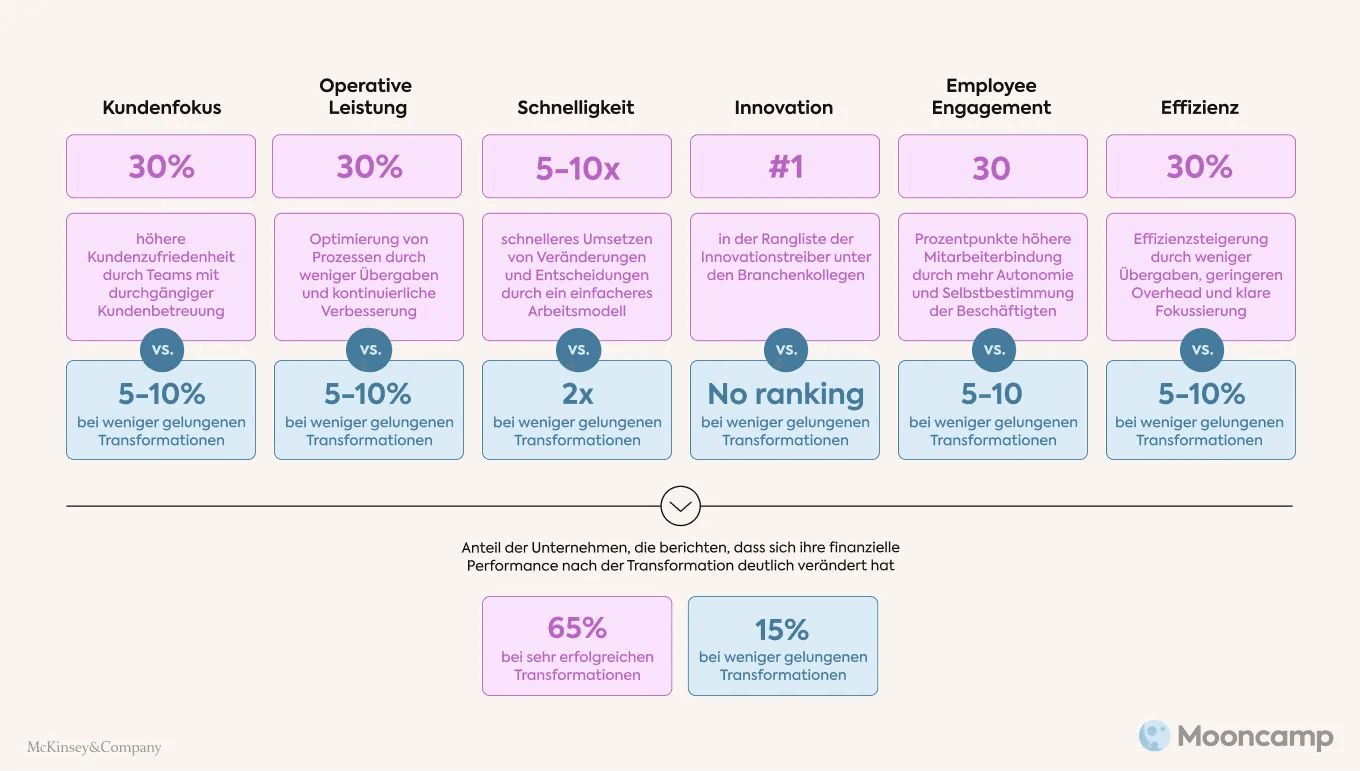
OKR statistics: Goals and ambition
Ready for some OKR statistics? In this section you will find the latest figures on the ambitions and goals that companies are pursuing with the introduction of OKRs.
- 90% of companies introduce OKRs through their leadership team, either the executive management or the board of directors. The goal here is to also improve corporate governance. (OKR Impact Report 2022)
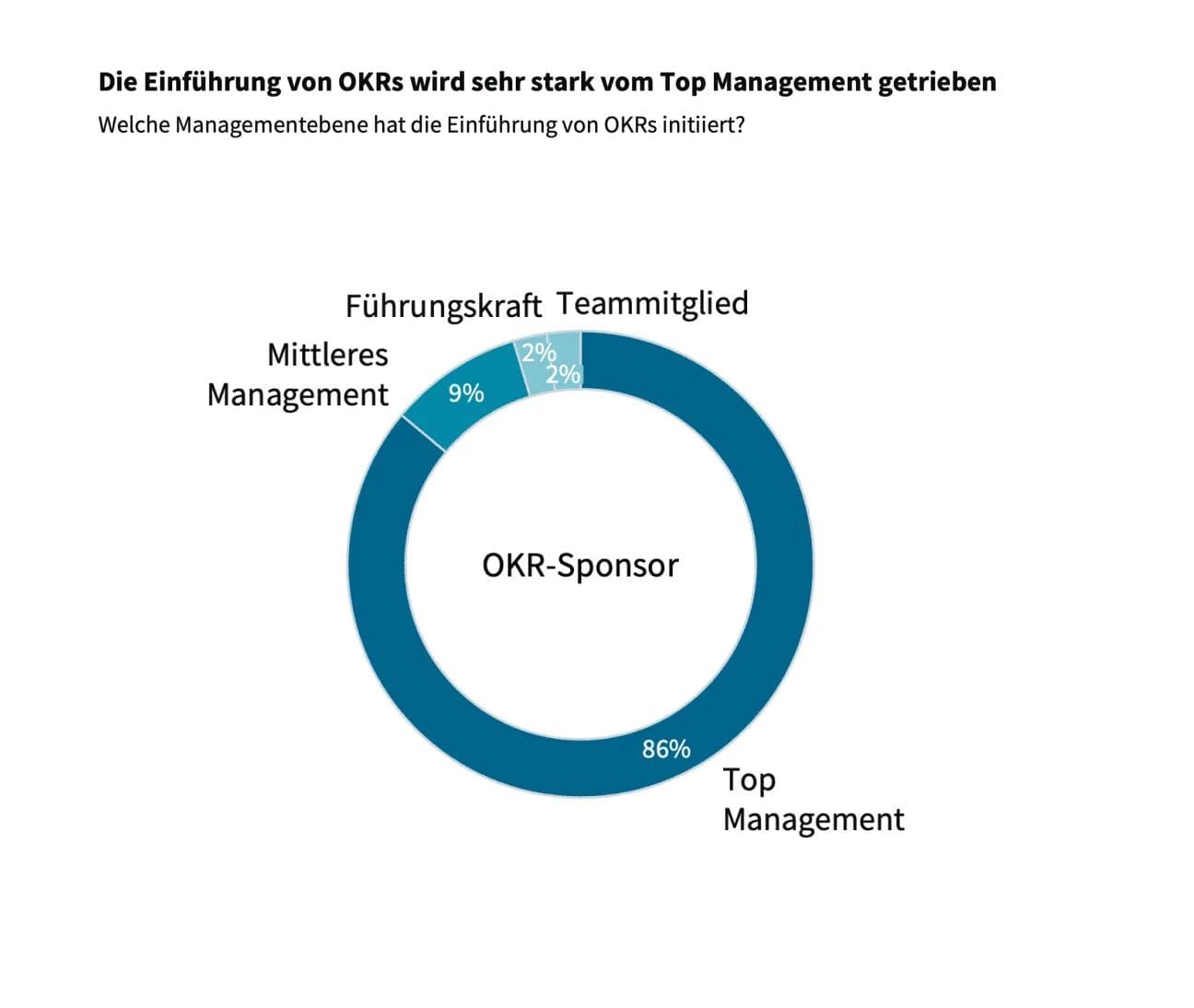
- OKRs drive change: nearly 60% of companies explicitly use OKRs as part of a change or transformation initiative. (OKR Impact Report 2022)
- The 3 most common motivations for implementing OKRs are transparency, better prioritization, and overall more effective strategy execution.
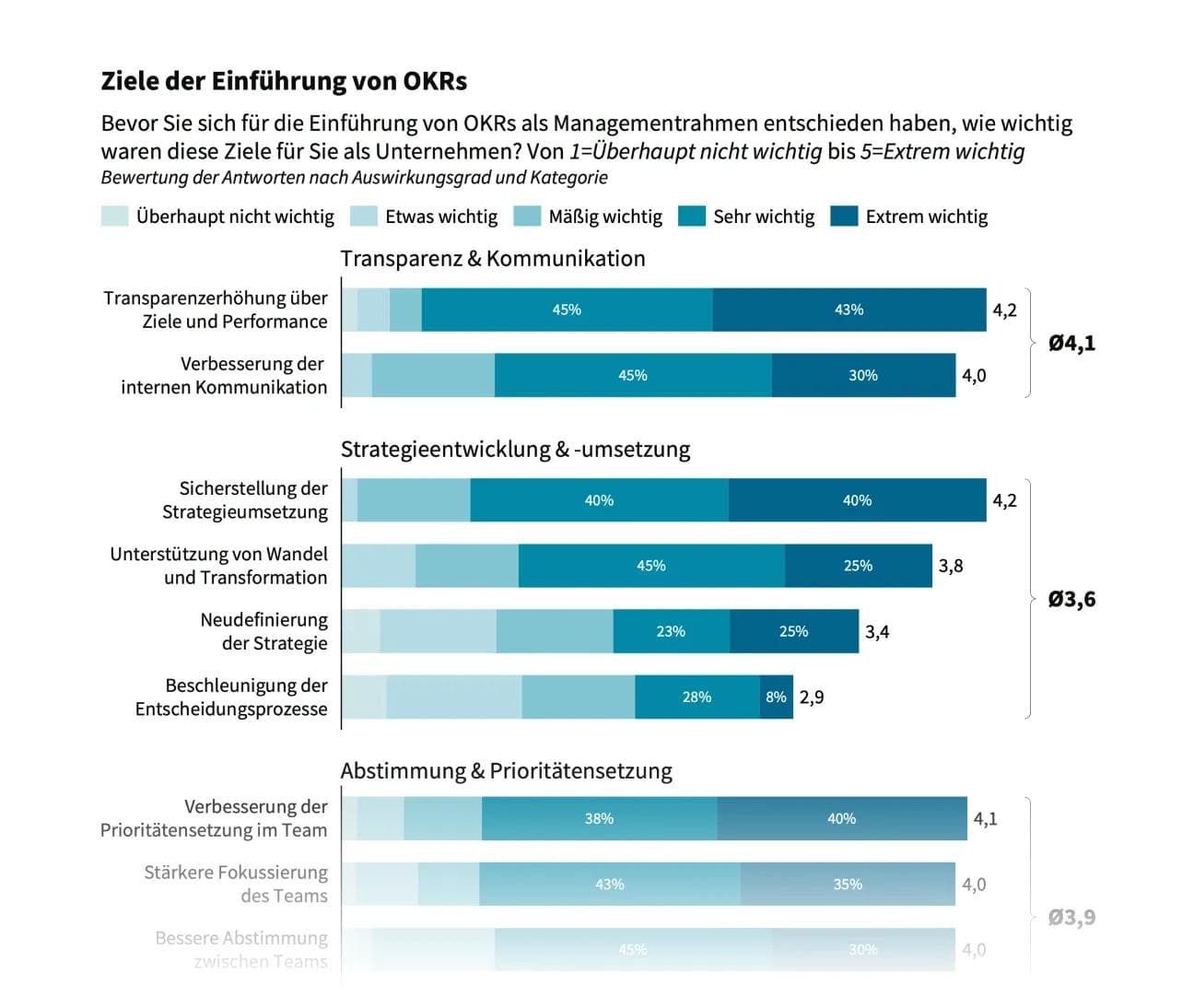
- Increasing agility and innovation, accelerating processes, or redefining strategy are less critical to the decision to adopt OKRs in practice, although these issues are repeatedly emphasized in the context of OKRs. (OKR Impact Report 2022)
OKR statistics: Use of OKRs
Let's continue with data on how OKRs are actually used in companies.
- 100% of companies working with OKRs are using them to drive business strategy. For 75% of companies, corporate strategy is a very important reference point. (OKR Impact Report 2022)
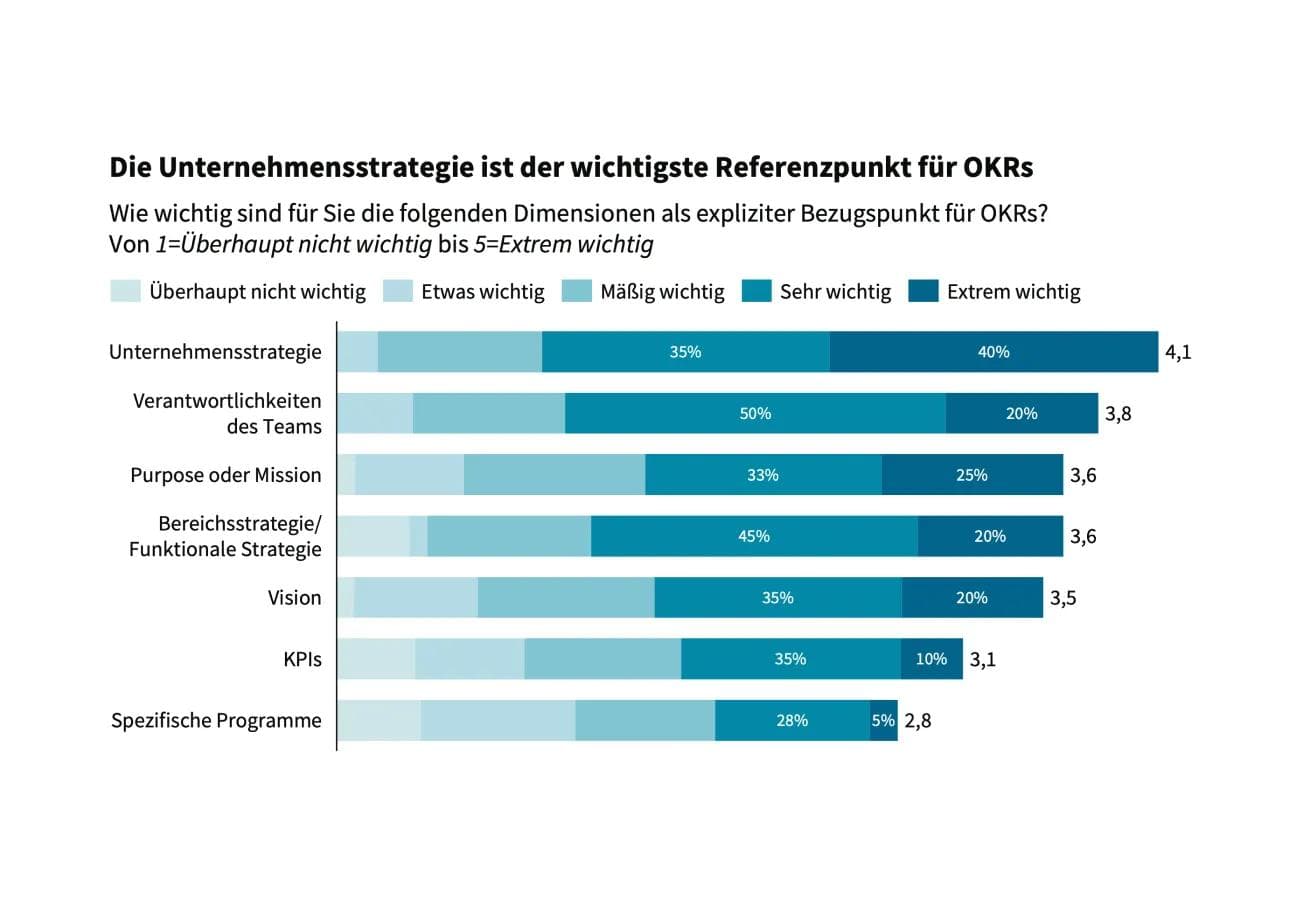
- OKRs are less often used to advance KPIs or specific programs. (OKR Impact Report 2022)
- 70% of organizations use an OKR system with quarterly OKRs. (OKR Impact Report 2022)
- More than 60% of companies conduct OKR check-ins at least bi-weekly. (OKR Impact Report 2022)
- When companies use OKR software, intuitiveness and customizability are the most important decision criteria. (OKR Impact Report 2022)
- Not all companies that work with OKRs necessarily use OKR software so far. According to Haufe Talent, the percentage is currently 28%. (But this may also be related to the size of the companies surveyed).
- 71% of OKR users hold a retrospective at the end of each OKR cycle, and 91% of them incorporate the findings from this session as they write OKRs and set key performance indicators for the next cycle. (Haufe Talent, in German)
OKR statistics: impact, success factors and challenges
Next, let's take a closer look at the impact of OKRs as well as the challenges and success factors of working with this framework in practice.
We'll start with some statistics on impact:
- Employees working with team OKRs tend to have a better understanding of the company's vision (~72% vs. ~50% without OKRs). Plus: 60% of employees who work with OKRs have a tangible understanding of the company's strategy. In companies without OKRs, the value is only around 37%. (Haufe Talent, in German)
- 83% of companies would recommend the OKR framework to others as a valuable goal-setting approach for their company. (Haufe Talent, in German)
- The most significant reasons for recommending OKR are (1) higher focus and degree of prioritization, (2) perceived impact on company culture, and (3) improved transparency about the strategy. (OKR Impact Report 2022)
- Measurable outcomes of OKRs also include a better understanding of the company's strategic goals and an optimized communication and feedback culture. (Haufe Talent, in German)
- 83% of companies working with OKRs believe they have benefited from implementing the framework. (OKR Impact Report 2022)
- Employees who use OKRs think their company is well positioned for the future. 67% of team members using OKRs believe their company can respond quickly to market changes. Without an OKR in place, only 50% feel this way. (Haufe Talent, in German)
- Employees in companies that use OKRs are more satisfied. According to Haufe Talent, 78% of employees who use OKRs are satisfied with their jobs. In the comparison group without OKRs, only 65% of participants were.
- Teams that use OKRs generally rate their collaboration as more successful. This is due to the fact that constructive feedback is given more frequently, managers act more as coaches and more employees actively take responsibility for their own actions, decisions and results. (Haufe Talent, in German)

- Sears Holding Company saw an 8.5% increase in sales per hour (from $14,44 to $15,67 per hour per employee) within 18 months after implementing OKRs for 20,000 employees as long as OKRs were used consistently (all cycles per year).
- The consistent use of OKRs at Sears Holding Company also resulted in an an 11.5% increase in the chance of high performance.
- With inconsistent use of OKRs (1 to 3 cycles per year), the performance increase was only 3%. (Sears Holding Company)
Challenges that emerge in recent studies are:
- OKRs require discipline and commitment from management. Success in implementation depends heavily on executive buy-in. (OKR Impact Report 2022)
- Distinguishing OKRs from day-to-day business and aligning them between teams is perceived as particularly challenging. (OKR Impact Report 2022)
The following can be said about success factors for OKRs:
- The most important success factor for working with OKRs is communication. (OKR Impact Report 2022)
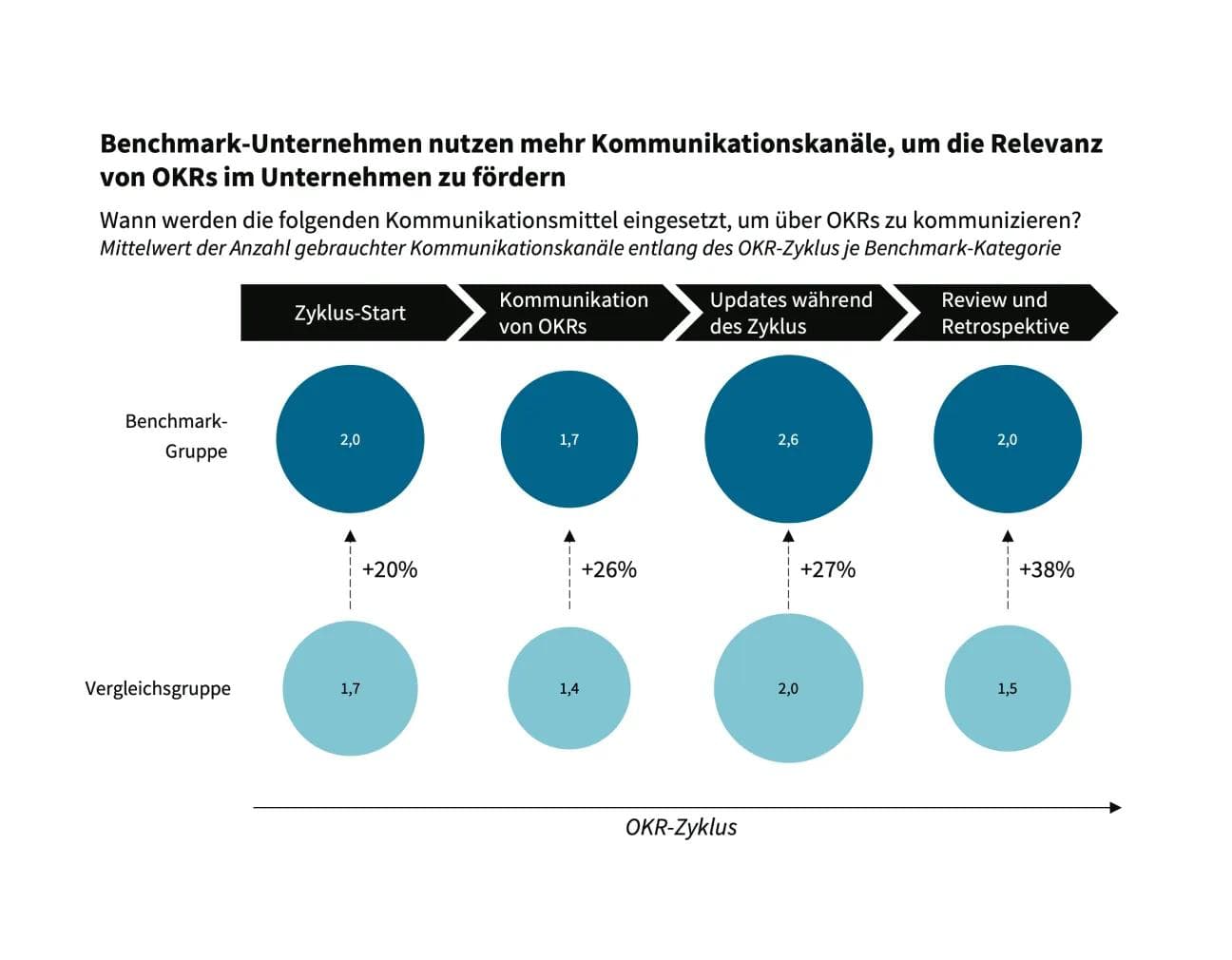
- Other key success factors in implementing OKRs include clear processes, disciplined pursuit of the methodology, support from management, and defining and communicating the strategy as a guiding framework. (OKR Impact Report 2022)
- Companies are particularly successful with OKRs when they are strongly aligned with the company's strategy, vision, and purpose. (OKR Impact Report 2022 & Haufe Talent)
Additional resources – learn more about OKRs
If you want to learn even more about OKRs after reading these (compelling) OKR statistics, be sure to check out these resources:
- OKR benefits: 9 reasons to get started with OKRs today
- OKR, Agile and Scrum: The complete guide
- Guide to the OKR methodology
- Best OKR software
OKR statistics: FAQ
What is OKR?
OKR stands for “Objectives and Key Results” and is an agile framework for strategic goal setting in organizations. OKRs enable organizations to become more agile and successful through transparent, inspiring team Objectives (each team has its own OKRs) that are aligned with the organization's vision and mission. Those are defined across all levels, implemented by the teams and monitored using quantitative metrics (Key Results).
How effective are OKRs?
OKRs are effective when it comes to creating greater transparency in the workforce with regard to corporate goals, communicating more effectively internally, and aligning execution more strongly with higher-level strategic goals. Recent studies suggest that most teams already working with OKRs perceive a positive impact on the company and decision makers would strongly recommend OKRs as a management method.
What is the ROI of OKR?
The exact ROI of OKRs has not yet been sufficiently proven. However, the collection of existing studies suggests that companies benefit greatly from OKRs. Sears Holding Company, for example, saw an 8.5% increase in average hourly sales after implementing OKRs. This suggests a significantly positive ROI. In addition, OKRs influence intangible factors that are also valuable to organizations, such as less wasted time, higher productivity, and improved execution.


